08 Jun 2015
The Top Three Reasons Marijuana Should Be Banned
Recreational marijuana is a buzzword these days, and for good reason. As voters are given the choice, many are opting to make this drug legal for adults to use however they see fit. The tide of public opinion may be shifting and the benefits of legalization of marijuana for recreational use highly touted, but marijuana remains a federally illegal, mind-altering substance.
Top Three Reasons Marijuana Should Be Banned
Before you make up your own mind in the pros and cons of legalization of marijuana debate, make sure you are familiar with the major reasons why this drug needs to remain illegal.
1. Marijuana Is Addictive
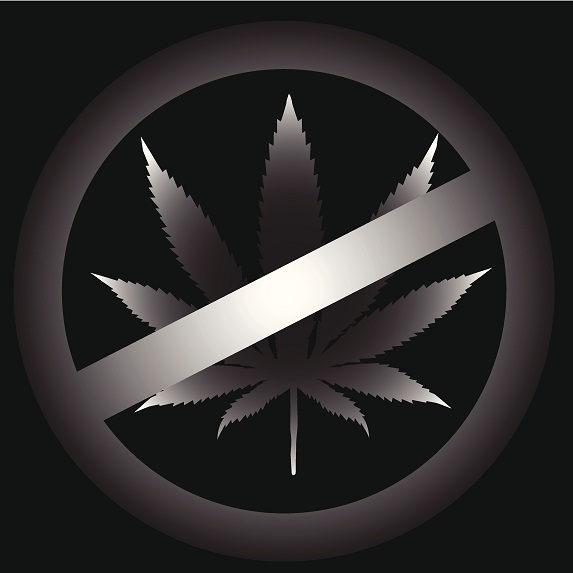 One of the biggest misconceptions about cannabis, or marijuana, is that you can’t get addicted to it. This stems from the fact that it is much less addictive than substances like heroin, meth or crack. This does not mean, however, that you cannot develop a habit when smoking pot. Thousands of people every year seek treatment for marijuana addiction, and it is a real and serious problem.
One of the biggest misconceptions about cannabis, or marijuana, is that you can’t get addicted to it. This stems from the fact that it is much less addictive than substances like heroin, meth or crack. This does not mean, however, that you cannot develop a habit when smoking pot. Thousands of people every year seek treatment for marijuana addiction, and it is a real and serious problem.
It’s easy to be misled by the lax attitude toward marijuana. A lot of people use it recreationally and are able to keep it that way. Maybe you smoke at a party one time and then get some to use at home by yourself. You find that it’s nice to use when you want to relax or party with a few friends. But before you know it, that partying becomes addiction and you can’t relax without your drug of choice.
2. Young People Are Harmed By Marijuana
But, you say, marijuana is being made legal for adults only, not for teens. Of course, there’s no such thing as underage drinking, right? Alcohol is supposed to be for adults only, but around 10 percent of drinking in this country is done by people under the age of 21. Based on alcohol’s example, we can expect that the same will happen with legal pot. Marijuana is particularly bad for young people with brains that are still in development. Studies have shown that teens who smoke pot regularly have lower IQs than their peers. They perform worse academically, miss more days of school and are less likely to participate in extracurricular activities.
3. Marijuana Causes Accidents
Another lesson that alcohol teaches us is that although driving under the influence is outlawed, too many people do it. The result is that thousands of people are injured or killed every year by drunk drivers. With legal marijuana we will be adding thousands of more to that list every year. Intoxicated driving is the same no matter what the substance is. A high driver is like a drunk driver and liable to cause accidents.
The debate about making this drug legal will continue and more states are likely to vote for it, but the cons for recreational marijuana are just too many and too great. There is no need for legal drugs when the safety and well-being of all Americans is at stake.
Get Help Now – Learn More About Marijuana Addiction Treatment
A new trend has emerged in the voting booth: people are saying yes to legal, recreational marijuana. Are there really any benefits of making this drug legal to adults? What will the consequences be, good or bad? It’s too early to tell, but in time we will see if there really are any pros of legalizing recreational marijuana or if it has all been a big mistake and a failed experiment.
Marijuana Is Just For Adults, Right?
Among the many concerns that critics of legalized recreational marijuana have, perhaps the most important is the safety and the health of children and teens.
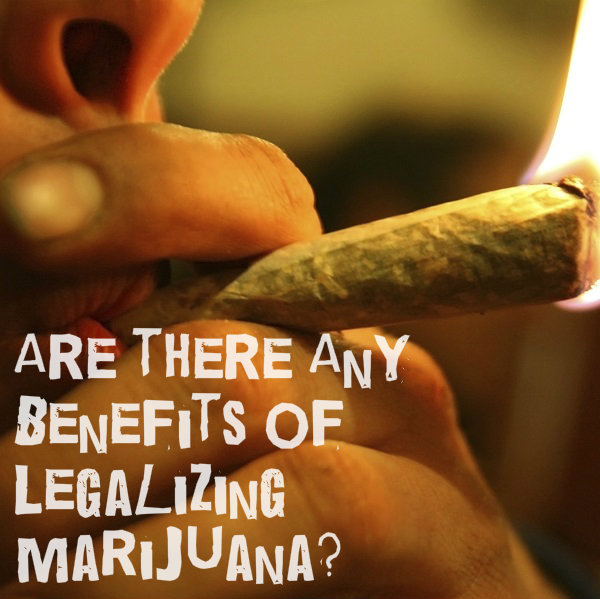 Proponents argue that there are age limits and that kids can’t get access to marijuana, but the same could be said of alcohol. And yet, underage drinking is more than common. In fact, alcohol is the number one substance of abuse among teens. Why? They can access alcohol more easily than drugs because alcohol is legal for adults. To think that kids won’t get their hands on pot is naïve.
Proponents argue that there are age limits and that kids can’t get access to marijuana, but the same could be said of alcohol. And yet, underage drinking is more than common. In fact, alcohol is the number one substance of abuse among teens. Why? They can access alcohol more easily than drugs because alcohol is legal for adults. To think that kids won’t get their hands on pot is naïve.
The safety of teens and kids is important because it will be compromised and is a major one of the many cons for recreational marijuana. Young people have vulnerable, developing brains, and marijuana is a mind-altering drug.
When teens smoke pot they throw a wrench in the works of that development. It has even been shown that smoking pot regularly can lower IQ and reduce academic achievement. Another important point is that most people who get addicted to marijuana started smoking when they were teens.
Public Safety Concerns Everyone
Another major point of contention in the discussion of the pros and cons of legalization of marijuana is the possibility of more accidents. Supporters of legal marijuana say that it isn’t as bad as alcohol when it comes to driving, but it is bad. You can’t drive high and expect to never have an accident. With more pot smokers on the road, more of us are likely to fall victim to a devastating traffic accident. States with legal marijuana have yet to determine how to set and accurately measure an intoxication level.
Are There Any Pros Of Legalizing Marijuana?
When you ask proponents of legal marijuana why they support it, you will mostly get half-hearted answers. Most supporters simply think there is no reason not to make it legal, if alcohol is legal. Others just want to be able to smoke legally and support recreational marijuana for personal and selfish reasons.
Perhaps the one pro that makes the most sense in the argument for legal recreational marijuana is for state revenue. Many states are operating in budget deficits and could use a new source of revenue to shore up their coffers. Whether or not marijuana is the answer to this particular problem remains to be seen. What we know for sure is that it is a big risk for some extra money.
Find Out Now How Changing Marijuana Laws May Impact Children
It would seem that negatives to recreational drugs would be obvious and overwhelming, but voters in several states have now approved legal, recreational marijuana. Medical marijuana is legal in nearly half of the 50 states, but allowing recreational use of the drug is a completely different matter. Washington, Oregon, Colorado, Alaska and the District of Columbia have made the vote for legal, recreational pot. According to many opponents of the votes, these states have made a big mistake.
Why Voters Approve Legal Marijuana
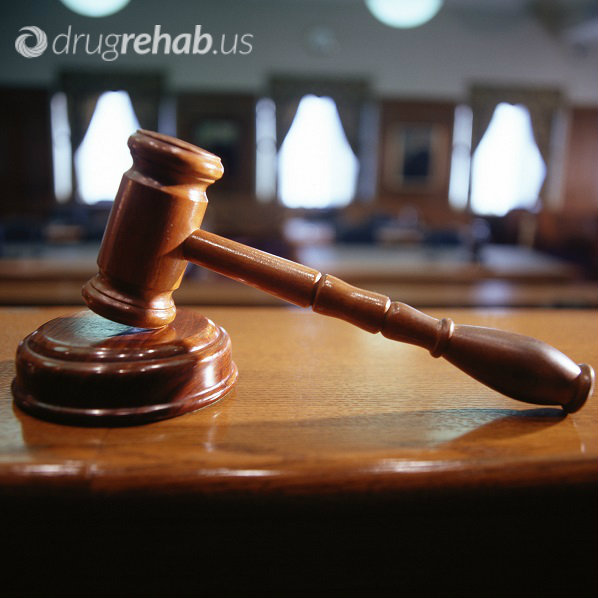 Marijuana remains illegal for recreational use according to the federal government, but states are asserting their rights and putting the legality of the drug to the vote.
Marijuana remains illegal for recreational use according to the federal government, but states are asserting their rights and putting the legality of the drug to the vote.
Those voters who have approved the legalization have a number of reasons for doing so and feel that they outweigh the obvious disadvantages of legalizing marijuana.
Some simply want to be able to use the drug without breaking the law.
Others see it as a good source of revenue for the state.
Many also see it as a way to reduce prison populations.
The Cons Of Recreational Marijuana Legalization
While the upside reasons to legalizing pot can sound pretty convincing, they completely ignore the obvious downsides. The overwhelming reasons to not allow legal marijuana are related to public health and the health of individuals. Marijuana is a mind-altering, addictive drug. Too many people forget this fact and falsely assume that marijuana is not that detrimental to health simply because it isn’t as bad as heroin, meth or cocaine.
Regular marijuana use leads to addiction in about 10 percent of those who partake. There are more people in rehab for marijuana addiction than for any other single drug. Even without addiction, marijuana use is detrimental to health. Smoking pot can cause lung conditions and memory loss. Using pot can also lead to accidents. Driving under the influence of marijuana is dangerous and there is no way yet to accurately determine when someone is too impaired to drive.
Of all the cons of legalizing marijuana, perhaps the most serious is the effect it could have on young people. Teens with developing brains stand to suffer the most from using this drug, and while laws will ban them from using it, everyone knows that legalizing the drug will only increase access for young people.
Currently, alcohol is the most commonly abused substance by teens because it is the easiest substance to get. With legalization, access to pot will only increase. Teens who smoke pot regularly risk causing permanent damage to their brains, including memory impairment and a lower IQ. Teens are also at a greater risk than adults of becoming addicted to marijuana.
Legalization of recreational pot is a reality that we must now face. With four states and D.C. voting for legalization and more states likely to follow suit, the negative consequences are likely to start appearing. If you have a teen in the home, be sure to have a talk about the dangers of using marijuana. Many people, especially teens, fail to recognize the risks taken when using marijuana.
How Many People Use Medical Marijuana? – Find Out The Truth Now!
02 Apr 2015
Why Recreational Marijuana Should Stay Illegal
Should marijuana be legalized for recreational use? This is a question on the minds of many people these days. Voters have gone to the polls and, in a few states, are telling their governments that they want legal pot. Attitudes toward this mind-altering substance are changing and many people don’t believe it is harmful enough to be illegal. This attitude is dangerous, though. Marijuana is a drug that changes brain chemistry, alters mood, causes side effects and leads to addiction in at least a tenth of users. There are too many reasons for keeping this drug illegal.
Main Reasons Why Recreational Marijuana Should Stay Illegal
Marijuana Is Bad For Health
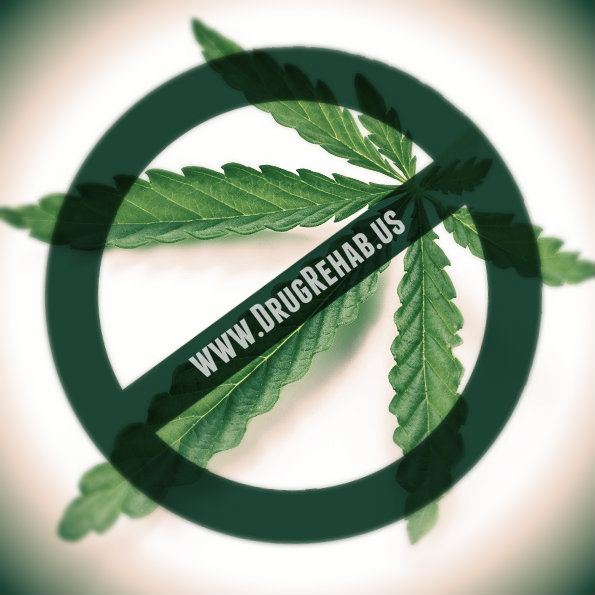 There is a lot of evidence that some of the compounds in the cannabis plant, which is where marijuana comes from, can help people with certain illnesses. But for healthy people, using marijuana causes a number of bad side effects and negative health consequences.
There is a lot of evidence that some of the compounds in the cannabis plant, which is where marijuana comes from, can help people with certain illnesses. But for healthy people, using marijuana causes a number of bad side effects and negative health consequences.
Short term marijuana effects include:
Sleepiness and depression, an increased heart rate (which can cause a heart attack, anxiety and panic), and delayed reaction times.
Long term marijuana effects include:
Over the long-term the drug suppresses the immune system, causes growth disorders, lack of motivation and lung damage, changes mood and personality and lowers libido.
Marijuana Is Addictive
One of the greatest misconceptions about this drug, and an important argument against legalization of marijuana is addiction. While not nearly as addictive as drugs like heroin or crack, marijuana is habit-forming and causes addiction in one out of nine users. Many people seeking professional treatment for addiction are hooked on marijuana. The problem is particularly real for young people. Addiction to marijuana is most likely to develop in users who started smoking as teenagers.
Marijuana Causes Accidents
Most people who use marijuana like the relaxing sensation that it imparts. The drug makes you feel drowsy, happy, relaxed and comfortable. The downside to these effects is the risk of having accidents. Marijuana messes with your coordination, reaction times and inhibitions. While high on pot, people make bad choices and have accidents that could have been prevented. If marijuana is legal, innocent people will become the victims of these accidents. Drinking and driving accidents already kill many people every day. Driving while high on pot will only add to the problem.
Marijuana Harms Young People
Teens and young adults are especially vulnerable to the negative effects of marijuana. They are more likely to become addicted to it. They are also at a greater risk of lasting mental damage from marijuana. Brains of teenagers are still developing, and using mind-altering substances can hamper that development. Teens using marijuana regularly experience lasting cognitive defects and memory deficits.
The pros and cons of recreational cannabis will continue to be debated in the public and voters will keep going to the polls to decide pot’s legal status. As the discussion carries on, we all need to remember the harm that marijuana causes and the lasting damage many users experience.
Read More What’s The Impact Of Recreational Marijuana Becoming Legal In Colorado?
05 Feb 2015
Can You Safely Use Recreational Marijuana?
Recreational marijuana is now legal for adults in Washington and Colorado. The citizens of those states spoke and voted for legalization. The votes signify shifting attitudes across the country. Many people do not believe that marijuana should be kept illegal. Proponents of legal marijuana say that it is less risky than cigarettes or alcohol and that the tax revenue can help state and local governments.
Does this mean that you can use marijuana safely?
Short-Term Effects Of Marijuana
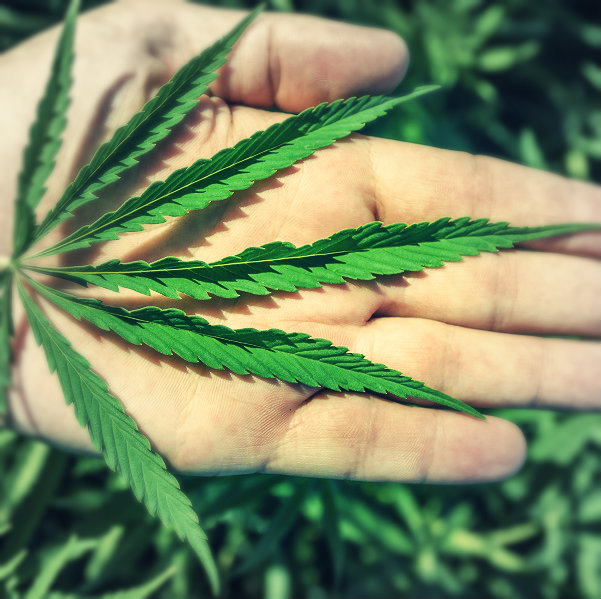 Before you decide whether or not you can safely use recreational marijuana, you should know the facts. When you smoke pot or consume the cannabis plant you are taking in a psychoactive compound called THC. This is the substance that is largely responsible for the high that accompanies pot smoking. THC acts on certain receptors in the brain to produce a number of effects: giddiness, lightheadedness, relaxation, introspection, a desire to eat, but also paranoia, irritability and disturbing thoughts.
Before you decide whether or not you can safely use recreational marijuana, you should know the facts. When you smoke pot or consume the cannabis plant you are taking in a psychoactive compound called THC. This is the substance that is largely responsible for the high that accompanies pot smoking. THC acts on certain receptors in the brain to produce a number of effects: giddiness, lightheadedness, relaxation, introspection, a desire to eat, but also paranoia, irritability and disturbing thoughts.
Using marijuana also results in an impairment of certain abilities. Your memory gets worse, as does your ability to focus and concentrate. It blunts your motor skills and your ability to operate machinery effectively. Driving a car is extremely dangerous when under the influence of marijuana.
Long-Term Effects Of Marijuana
The long-term impact of smoking pot is still being researched, but there is plenty of evidence that it can have some seriously negative effects. Most problematic is the impact on young people. If you start using marijuana as a teen you are at a much greater risk of getting addicted. You also face the risk of permanently damaging cognitive functions. Regular users who began smoking as teens see a drop of as much as eight IQ points into adulthood.
Even casual users of marijuana experience permanent changes in the brain. These include changes to the parts of the brain that govern motivation, addiction and emotion. And of course, there are health problems associated with smoking, which include respiratory illnesses and potentially the development of lung cancer with frequent and regular use.
Marijuana Is Addictive
Proponents of marijuana use will argue that the drug is not addictive, but research says otherwise. It is less addictive than nicotine, alcohol and heroin, but it is habit forming. In fact, nine percent of people who ever use the drug will become dependent on it. The risk is especially high for young people. For users who first started smoking as a teen, there is a much greater chance of getting hooked than for an adult using the drug for the first time.
Adults using pot run the risk of becoming addicted too. The greatest risk comes with using it regularly and frequently. Unlike harder drugs, addiction to pot is not sudden. It comes on more slowly, but can be just as devastating. 18 percent of people seeking drug addiction treatment in the U.S. are addicted to marijuana. Withdrawal symptoms that make it difficult to quit include insomnia, cravings, anxiety and irritability.
If you have been wondering about recreational marijuana and whether it can truly be safe for a responsible adult, make sure you get all the facts. No drug is ever safe. Marijuana may carry fewer risks than heroin or cocaine, but it can alter your brain, dull your motor skills, impair your memory, lead you to have an accident, lead to respiratory problems and cause you to become an addict. Are these risks worth the high? That is for you to decide.
Marijuana is the most popular illicit/illegal drug in the U.S. among both younger and older people. In some cases, people who consume marijuana may also be active participants in other forms of drug use.
In a study published in September 2014 in the Journal of Addictive Diseases, a team of American researchers explored the connection between marijuana use and the intake of other drugs among young people transitioning from adolescence into early adulthood. These researchers concluded that daily consumers of marijuana in this age range are statistically more likely to also use additional drugs.
Stats On Marijuana, Older Teens And Young Adults
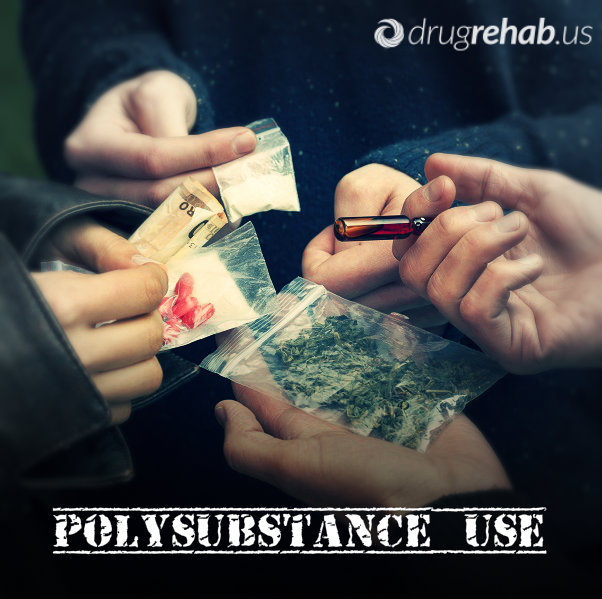 Approximately 19 million Americans over the age of 11 consume at least some amount of marijuana in a typical month, according to 2012 figures compiled through a federal project called the National Survey on Drug Use and Health.
Approximately 19 million Americans over the age of 11 consume at least some amount of marijuana in a typical month, according to 2012 figures compiled through a federal project called the National Survey on Drug Use and Health.
All told, users of this cannabis product account for close to 80 percent of the nation’s entire population of illicit/illegal drug users. Roughly 63 percent of the nation’s illicit/illegal drug consumers only use marijuana, while the remainder of marijuana users also consume at least one other drug.
Teenagers over the age of 15 and young adults under the age of 26 have the highest monthly rates for marijuana intake. Approximately 14 percent of 16- and 17-year-olds consume some quantity of the drug in the average month. The monthly rate of marijuana use rises to nearly 19 percent in older teens and younger adults between the ages of 18 and 25. Roughly 7.6 million American teens and adults qualify as daily marijuana users by consuming the drug at least 20 days a month. In addition, roughly 5.4 million American teens and adults consume marijuana at least 300 days a year.
Polysubstance Use
Marijuana users who also consume other drugs participate in a form of substance use commonly known as polydrug or polysubstance use. As a rule, polydrug users have heightened chances of experiencing the damaging effects associated with the substances they consume.
Damaging Effects Of Polysubstance Use
These effects include:
- overdoses
- serious changes in cardiovascular (heart and blood vessel) function
- serious changes in lung function
- significant body temperature alterations
Serious changes in mental function can also occur that may qualify as symptoms of mental illnesses such as:
- major depression
- anxiety disorders
- psychosis-related disorders
Examples of additional substances sometimes consumed by marijuana users include the stimulant cocaine, methamphetamine or other stimulants, opioid drugs or medications, inhalants, sedative-hypnotic medications (i.e., tranquilizers and sleep medications) and hallucinogens.
Drugs Linked To Marijuana Use
In the study published in the Journal of Addictive Diseases, researchers from Brown University, Brown-affiliated Butler Hospital and the Veterans Administration used an examination of 1,075 people transitioning from adolescence to adulthood to determine the forms of polysubstance use most likely to occur among marijuana users in their late teens or very early 20s.
During interviews with the researchers, each of these study participants submitted information on his or level of involvement in marijuana use, as well as his or her level of involvement in the use of cocaine, stimulants other than cocaine, opioid drugs or medications, sedative-hypnotic medications, hallucinogens and/or inhalants. T
he researchers also gathered background information on such factors as each participant’s demographic profile (age, racial/ethnic ancestry, gender, etc.) and level of involvement in binge drinking.
Some of the young people enrolled in the study qualified as daily marijuana users, while others did not. After completing their analysis, the researchers concluded that daily consumers of the drug are substantially more likely than other people in the same age range to consume:
- cocaine
- non-cocaine stimulants
- inhalants
- opioid drugs and medications
- nicotine/tobacco
This finding holds true even when considerations such as demographic profile and level of binge drinking involvement are taken into account.
Based on their findings, the study’s authors concluded that daily marijuana users are unusually likely to participate in polysubstance use during the transition between adolescence and early adulthood. They also concluded that these daily consumers of the drug may have increased chances of experiencing notably negative health outcomes.
It’s important to note that, even in the absence of polysubstance use, daily marijuana use has clearly negative health impacts. For example, figures compiled by the National Institute on Drug Abuse indicate that roughly one-quarter to one-half of all daily consumers of the drug will eventually merit a diagnosis of cannabis addiction (part of a larger condition called cannabis use disorder).
Do You Or Someone You Love Need Help Overcoming Marijuana Addiction?
Learn More About Marijuana Rehab Treatment – Turn A Life Around Today!
29 Dec 2014
How Many People Use Medical Marijuana?
Medical marijuana is the term commonly used to describe the plant-based drug marijuana when consumed as a treatment under the direction of a physician. Despite the known effectiveness of the drug in limited medical contexts, many researchers and public health experts express a legitimate concern that medical marijuana use may contribute to increased marijuana-related harm in the larger population.
In a study published in September 2014 in the journal Drug and Alcohol Review, researchers from the U.S.-based Public Health Institute sought to estimate how many people in California, a state with a widely-developed medical marijuana program, consume marijuana/cannabis in a medical context.
Medical Marijuana – THC And CBD
Marijuana contains two prominent active ingredients, THC (tetrahydrocannabinol) and CBD (cannabidiol). THC is largely responsible for the mind-altering effects closely associated with marijuana/cannabis use. CBD does not have any substantial mind-altering impact. Both THC and CBD have potential usefulness in a medical context.
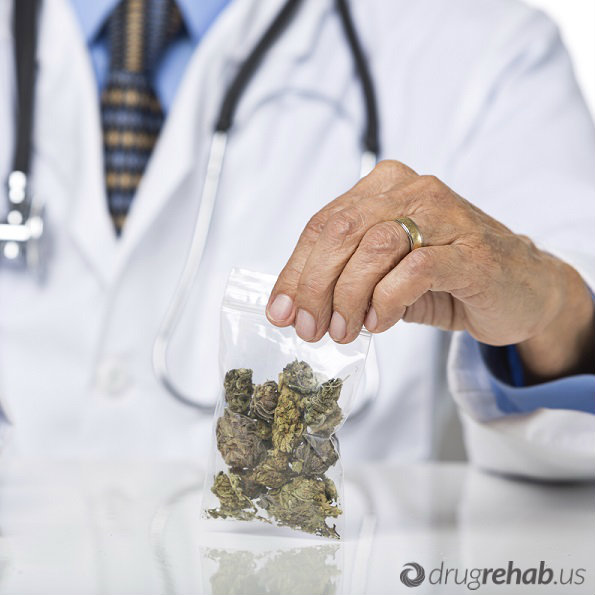 Scientifically supported medicinal properties of THC include nausea reduction and stimulation of appetite; other potential, less supported properties include the easing of inflammation and pain, as well as the reduction of muscle spasms.
Scientifically supported medicinal properties of THC include nausea reduction and stimulation of appetite; other potential, less supported properties include the easing of inflammation and pain, as well as the reduction of muscle spasms.
Scientifically supported medicinal properties of CBD include inflammation and pain relief, as well as seizure relief; the chemical may also help ease the severity of psychotic mental states.
Some medical marijuana growers sell products high in THC, while others sell low-THC products that rely on CBD for their effectiveness. However, without a thorough, case-by-case chemical analysis, no one can say how much of either chemical any given batch of marijuana/cannabis contains.
Among other things, this means that there is no such thing as “standard” dose of medical marijuana. For this and other reasons, the U.S. Food and Drug Administration does not recognize marijuana as a medical treatment.
In addition, federal law prohibits the sale or possession of marijuana and other forms of cannabis. Despite these facts, 22 U.S. states and the District of Columbia have laws in place that legalize marijuana/cannabis use as a treatment for certain ailments if a licensed physician issues a prescription.
Marijuana-Related Harm
Within or outside of a medical context, marijuana/cannabis use can lead to a number of significant health problems. For example, roughly 11 percent of all Americans who use the drug will eventually develop a diagnosable cannabis addiction. Addiction risks are especially elevated for people who use the drug habitually (as may be the case for medical marijuana consumers), as well as for people who begin their marijuana intake in adolescence.
Despite CBD’s potential to ease psychosis symptoms, heavy marijuana consumption is clearly linked to increased risks for experiencing psychotic episodes; in addition, regular consumers of the drug develop mental illness in general at a higher rate than the rest of the U.S. population.
Risks On Teen Marijuana Consumers
Apart from heightened risks for addiction, teen marijuana consumers have age-specific risks that include disrupted brain development, learning and memory impairment and an overall drop in intellectual skill. Physical ailments linked to marijuana use include lung infections, chronic bronchitis and heart disease.
How Many People Use Medical Marijuana?
California is one of the U.S. states that permits the sale of medical marijuana and the establishment of widely accessible dispensaries dedicated to medical marijuana distribution. In the study published in Drug and Alcohol Review, the Public Health Institute researchers used information gathered from the 2012 version of an ongoing project called the California Behavioral Risk Factor Surveillance System to estimate how many adult Californians report using marijuana in a medical context. A total of 7,525 randomly selected people took part in this phone-based project.
The researchers concluded that roughly 5 percent of California adults have used medical marijuana at least once. Demographically speaking, two groups of individuals are more likely to use marijuana in a medical context: young adults between the ages of 18 and 24 (also the group most likely to participate in recreational marijuana use) and adults with primarily European racial/ethnic ancestry.
However, medical marijuana use also occurs to some extent in every other demographic group, including men, women, people from various parts of the state, people with varying degrees of educational accomplishment and people from all other racial/ethnic backgrounds.
The study’s authors emphasize the fact that, although medical marijuana use is limited overall in California, people from all walks of life report using marijuana/cannabis in a medical context. The authors also emphasize the need to monitor the extent of marijuana-related harm in people who report using marijuana as a form of medicine. This is especially true since the availability of medical marijuana will likely increase in the future.
04 Dec 2014
What’s The Deal With Edible Pot?
Marijuana is often in the news these days, especially if you live in Colorado or Washington where pot is now legal for recreational use. For those of us not living in one of these two states, we are still hearing the tales of legal pot in the national news. Other states will be voting on legalization, and it’s important to hear what’s happening. Right now, edible marijuana is at the forefront. What does it mean and why is it in the news? What do you need to know about it and should you be worried?
Marijuana Edibles
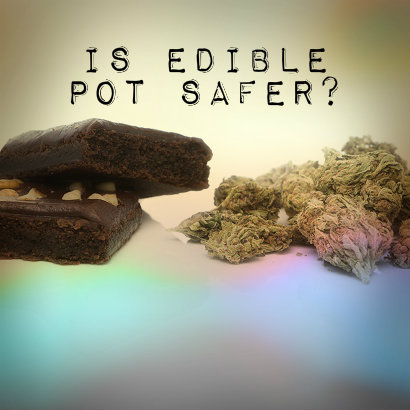 Marijuana is a drug that comes from the cannabis plant. Several parts of the plant, but especially the buds, are dried and then smoked. This is what you would typically think of when you think about marijuana use: someone smoking a joint.
Marijuana is a drug that comes from the cannabis plant. Several parts of the plant, but especially the buds, are dried and then smoked. This is what you would typically think of when you think about marijuana use: someone smoking a joint.
Smoking isn’t the only way to get high on the cannabis plant, though. The psychoactive compounds in the plant can be extracted and added to any number of foods. In fact, Colorado reports that 45 percent of legal pot sales in the state are edible products. Common foods with pot infusions include brownies, cookies, other baked goods, and candies.
Is Edible Pot Safer?
It might seem like eating cannabis-infused products would be safer than smoking a joint. Smoking is bad for your health, after all. For those inexperienced with using different types of pot products it can be difficult to understand the differences between pot edibles and smoking, but they are important. Several of these differences can make edible products more dangerous than smoking a joint.
The first difference is that the psychoactive compounds (the main one is called THC) are absorbed differently. To make you high the THC has to get into your brain. When you eat THC it goes to your liver first and is converted into a product that produces a more intense high. Inhaled THC just goes straight to the brain. If you smoke a joint you will get high sooner, but it will be less intense and last for a shorter duration. Because it takes longer for the high to begin, rookies at eating pot have made the mistake of eating too much. Famously, columnist Maureen Dowd made this mistake and spent eight hours hallucinating in her hotel room in Colorado.
Accidental Edible Marijuana Overdoses
Another difference is that dosing is much trickier with edibles. Some strains of cannabis have more THC than others, but for the most part smoking one joint is much like smoking any other. The concentrations of THC don’t vary too much. With edibles, the manufacturer can add a lot or a little concentrated THC extract. If the product isn’t labeled clearly, or at all, a user could make a terrible mistake and eat too much. Accidental edible overdoses have been devastating. Children have gotten their hands on these products and ended up in the emergency room, and even adults have had problems with them, resulting in two recent deaths.
Legal Recreational Marijuana And Edible Marijuana Regulations
As legal recreational marijuana becomes more common across the country, it is important for consumers, citizens and voters to be aware of the issues. One issue is edible marijuana products. Colorado officials are currently hashing out ways to regulate or even ban them to prevent accidents. The best way to avoid making dangerous mistakes with pot edibles is to avoid them altogether. No version of marijuana is safe. It is a mind-altering drug, and it can cause any number of health problems. Whether it is legal or not, marijuana is a drug.


